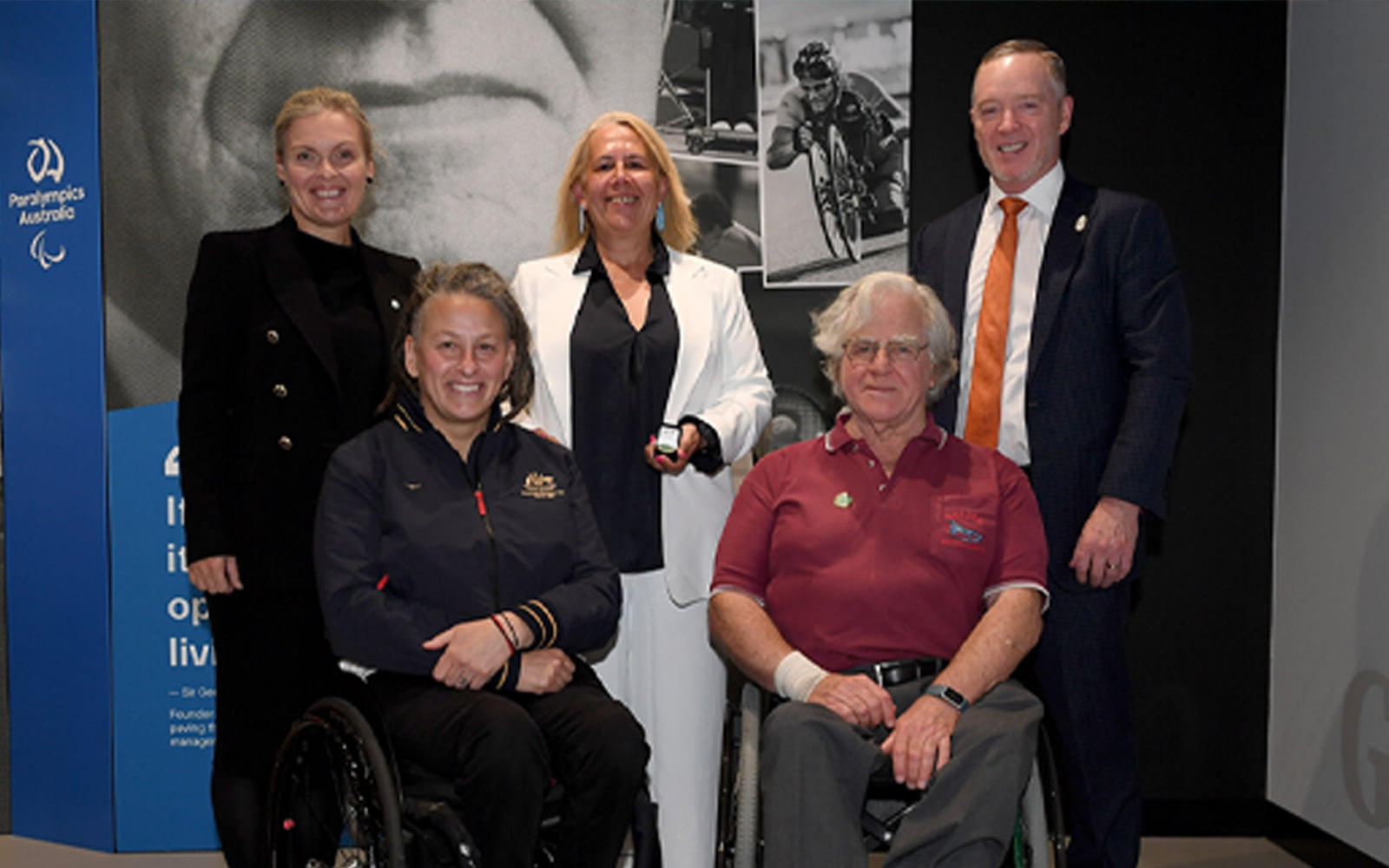Members of Australia’s trailblazing 1960 and 1964 Paralympic Teams have become the first athletes immortalised through a Paralympics Australia initiative to celebrate every athlete’s contribution to the Australian Paralympic Movement.
The Paralympic Pin project was launched at a special event in Melbourne on Friday, attended by members of the pioneering Australian teams or loved ones and a second ceremony was held in Sydney on Monday, where Pin No.1 was presented.
Under the program, each of the more than 1100 athletes who have represented Australia at Summer and Winter Paralympic Games will receive a unique sequential number according to the order in which they competed. They will also receive a Pin depicting ‘The Journey’, an emotive Indigenous artwork which has featured on the Australian Paralympic Team’s official attire since the Rio 2016 Games and depicts the connectedness of Australia’s Paralympians across time and distance.
Paralympic Pin presentation events are scheduled around the nation. At the event in Sydney, the two daughters of Australian Paralympian No.1, Daphne Hilton, accepted on their late mother’s behalf. Among those recognised at the event in Melbourne on Friday was Paralympian No.3, Kevin Coombs, the nation’s first Indigenous athlete to compete at the Games.
Amazing day today as we start the process of honouring our @AUSParalympics mob from the 1960 & 1964 Games. Michael Gow competed at Tokyo in 1964 and brought his beautiful medals in to share with us – medals made by the patients at the Stoke Mandeville Hospital #Paralympics pic.twitter.com/RwMtmq9CtU
— Kate McLoughlin (@katemcloughlin4) November 25, 2022
“In recent years, Paralympics Australia has endeavoured to better understand the impact our past athletes have had on the Paralympic Movement in this country, to better appreciate their unique place in our story and better celebrate their individual and collective contributions,” Paralympics Australia President Jock O’Callaghan said.
“Each athlete, from the Team of 1960 to up to our most recent representatives at the Tokyo 2020 and Beijing 2022 Paralympic Games, is part of an exclusive family of Australian athletes whose achievements stretch beyond sport.
“They have each played a role in building the Paralympic Games to what it is today, the world’s third-largest sporting event, and each played a role in the ongoing process of changing perceptions of people with a disability.”
O’Callaghan said the 23 pioneers of Rome 1960 and Tokyo 1964 provided a poignant starting point for the Pin project.
“They sold raffle tickets to pay their way to the Games,” he said.
“They travelled under conditions that would be unacceptable today for people with a disability, stayed in barely accessible accommodation and competed using what we’d now consider primitive equipment.
“Yet, they bravely showed people – most for the first time – what people with a disability could do in sport, helping spark an entire global movement which has transformed the lives of so many people.”
I was honoured to represent my Dad at the @AUSParalympics who have created this beautiful pin for the first & past paralympians. Dad represent Aust. in the first paralympics held in Rome in 1960. Thank you again. @Lizziec81660065 pic.twitter.com/ixNQLBhhvG
— Janine Coombs (@janine_coombs) November 25, 2022
O’Callaghan thanked Paralympics Australia staff members and key contributors to the Australian Paralympic History Project whose passion enabled the Paralympic Pin project to come to fruition. He also acknowledged PA’s Athlete Commission for leading the design of the Paralympic Pin, particularly the contribution of its vice-chair, seven-time Paralympian Danni Di Toro.
“I’m so pleased that a lot of work over several years has finally enabled us to launch this wonderful project and we’ll have these opportunities over coming months to truly recognise and immortalise each and every athlete who has represented us on the Paralympic stage,” he said.
By: David Sygall, Paralympics Australia
Posted: 28 November 2022


 Join AUS Squad
Join AUS Squad
